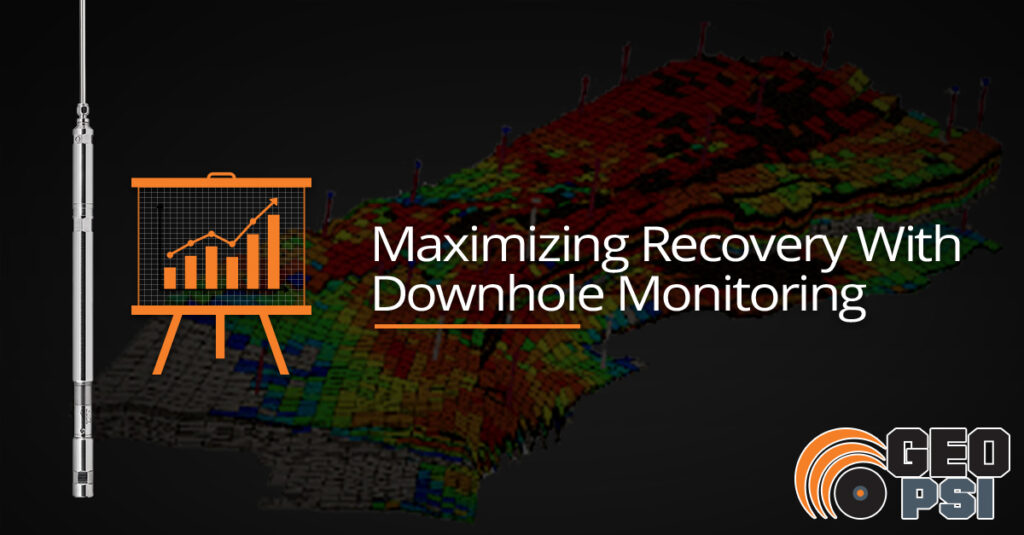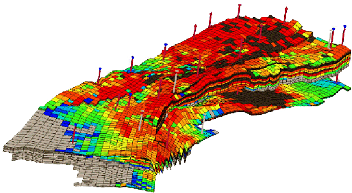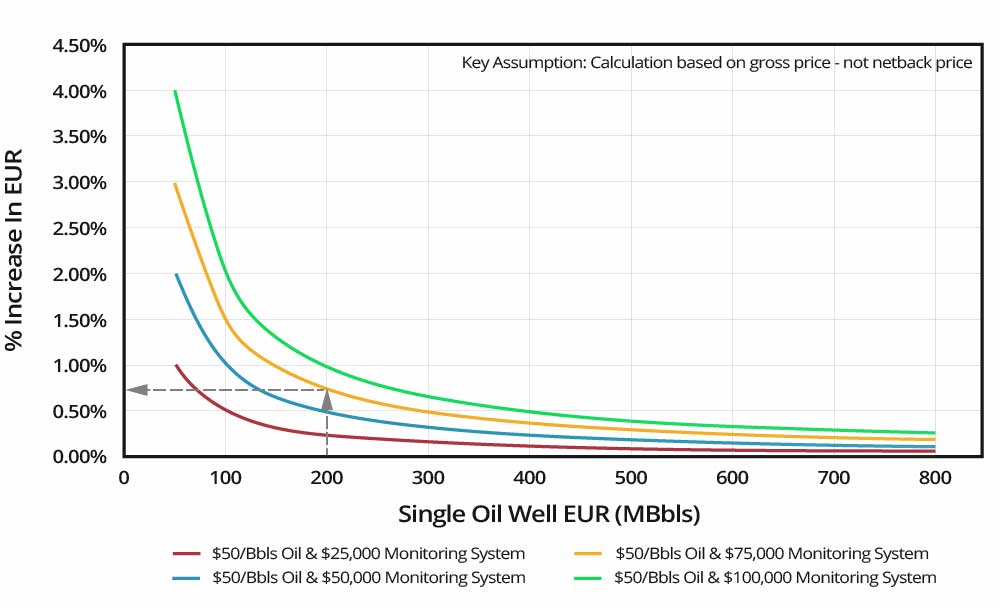
How utilizing real-time downhole data can help maximize estimated ultimate recovery
As our industry quickly transitions to data-driven operations we hope share about the ways that modern technology such as our real-time downhole monitoring systems can provide greater optimization and profitability. One specific benefit to this reliable real-time downhole data, is its use in helping operators maximize EUR (Expected Ultimate Recovery).
Better Reservoir Models With Better Data
By implementing a real-time downhole monitoring system, valuable data is collected which can provide detailed insight into the characteristics of the reservoir. While a single well with a downhole gauge is of great value, developing an entire field with downhole gauges in every well only exaggerates the benefit.
By precisely monitoring downhole fluid level and downhole pressure values you can not only develop a static picture of the reservoir, but also monitor in real-time how the reservoir reacts to different events.
With sample rates of up to 10x a second, and pressure accuracies exceeding ± 0.015% Full Scale, our gauges are able to paint a highly accurate and highly detailed picture of what is happening downhole.
With best-in-class real-time data from our downhole monitoring systems, you can develop better real-time reservoir models. These can be used to ensure operators optimize production so as to achieve maximum EUR.

Figure 1: Reservoir Model Simulation courtesy of – https://wiki.seg.org/wiki/Reservoir_simulation
Predicting Reservoir Performance
This better reservoir pressure data provides better reservoir models, which can be used to predict reservoir performance.
A big part of understanding reservoir performance is understanding reservoir heterogeneity. Heterogeneity strongly influences reservoir performance by controlling fluid flow & recovery factors (Wardlaw & Taylor, 1976; Wardlaw & Cassan, 1979; Weber, 1982).
This requires a detailed understanding & assessment of:
- Flow Patterns
- Drainage Efficiency
- Vertical & Lateral Sweep Efficiency
- Permeability (K), So/Sw, Flow, Formation Damage
- Hydrocarbon Volume
- Areal Distribution
- Play Trends
In addition to this, the real-time downhole data also helps operators develop an accurate IPR curve analysis, decline curve analysis, and produce a detailed production data study for the life of the well.
Many treat reservoirs as big homogenous tanks, but they aren’t!
The tighter reservoir plays have more production impacts due to heterogeneity/changes in rock quality (permeability, porosity, natural fractures, mineralogy) than some of the typical conventional plays as the impacts are magnified by the reduction in permeability. Downhole monitoring helps highlight the effect of these different factors and enables operators to account for them appropriately.
All operators are working to better manage reservoir characterization with more complex models and simulators:
- Pressure data is critical to accurate model predictions.
- Improved history matching to reservoir models
- Improved monitoring for enhanced recovery schemes
- Flood front monitoring
- Injector/producer alignment
- Optimized Infill drilling locations
- Minimize child/parent interference
- Reducing operating costs leads to extended producing life of well = increased EUR
- Allows for optimization of artificial lift system as reservoir depletion impacts well performance
Application Results
Below is a graphical representation to show the EUR increase required to pay for a permanent downhole monitoring system. The curves shown are for a range of system costs from $25,000 to $100,000.
As seen in the graph, although the current oil price is hovering around $80, we’ll take a very conservative $50 for calculation purposes throughout the life of well, which also showcases the maximum profitability in the least favorable situations.
Now, for a modest WTI $50/Bbls oil price, for a 200MBbls oil EUR, a $100K downhole monitoring system requires only a 1% increase in EUR to cover the system cost, undiscounted.
A US$50,000 monitoring system only requires 0.5% increase. This required increase in EUR is again very achievable.
The numbers translate to only 2000 Bbls (or 1000Bbls for $50K systems), which is less than the line width error in the decline curve.
This alone justifies installing permanent monitoring systems in every new well to provide data to optimize well placement and increase overall EUR.
% Increase In Single Well Oil EUR To Payout Downhole Monitoring System

Calculations provided by Blaine Pike -Petroleum Engineering Consultant
Conclusion
As you can see by the examples above, the benefit to your EUR as a result of running a real-time downhole monitoring system is massive. With a relatively small initial investment relative to the cost of developing the oilfield you can maximize recovery and have a massive effect on the ultimate return on investment of your development.
The supplied data helps operators develop an accurate IPR curve analysis, decline curve analysis, and enables a detailed study of production data for the life of the well. All of which helps operators maximize recovery from their wells.
While the added value of a downhole monitoring system can pay for itself very quickly, the long-term value makes these systems a no-brainer. With our industry-leading reliability, our systems are designed to last the life of the well and operate as an integral piece of any artificial lift system.
We have been fortunate to see the many benefits of real-time downhole monitoring from our clients firsthand. If you would like to know more about how real-time data from our downhole monitoring solutions can help you maximize production we encourage you to contact us!
Share This:




